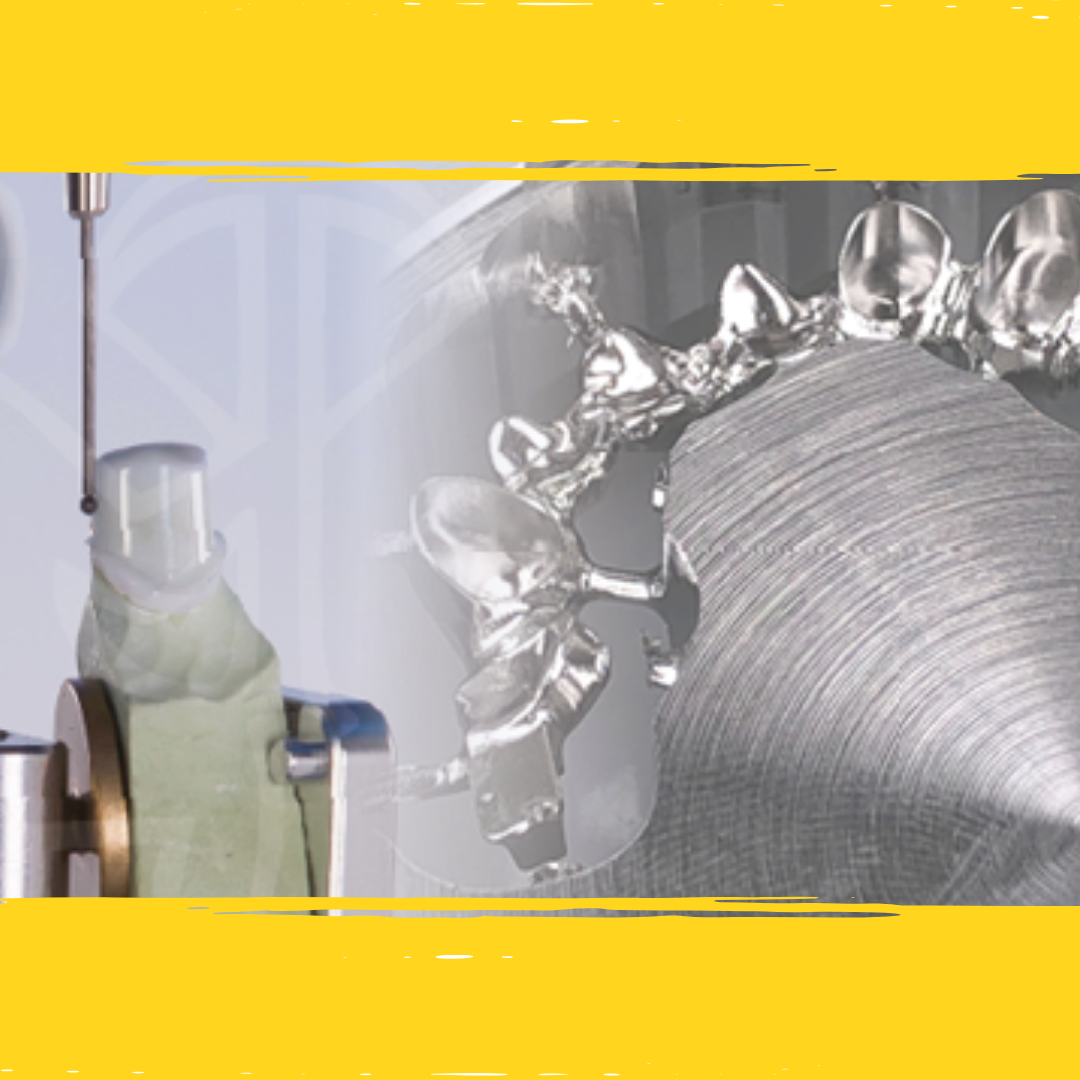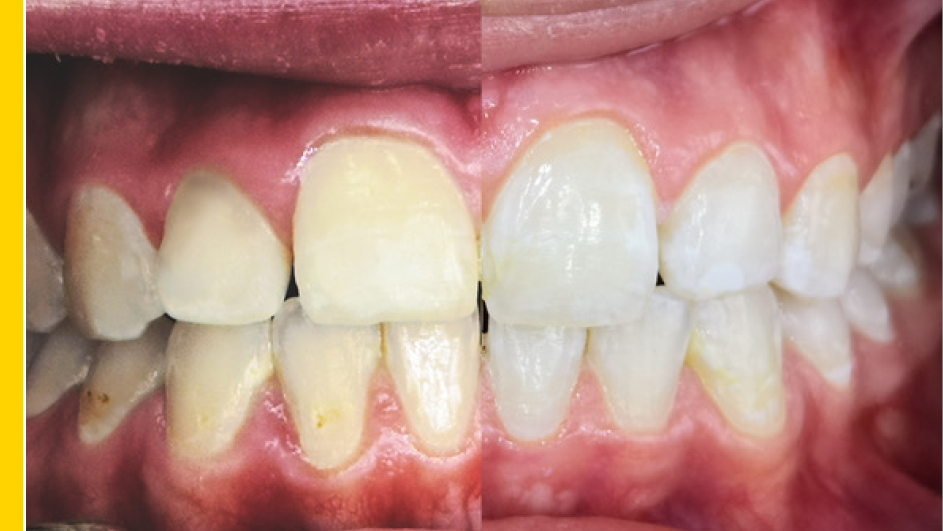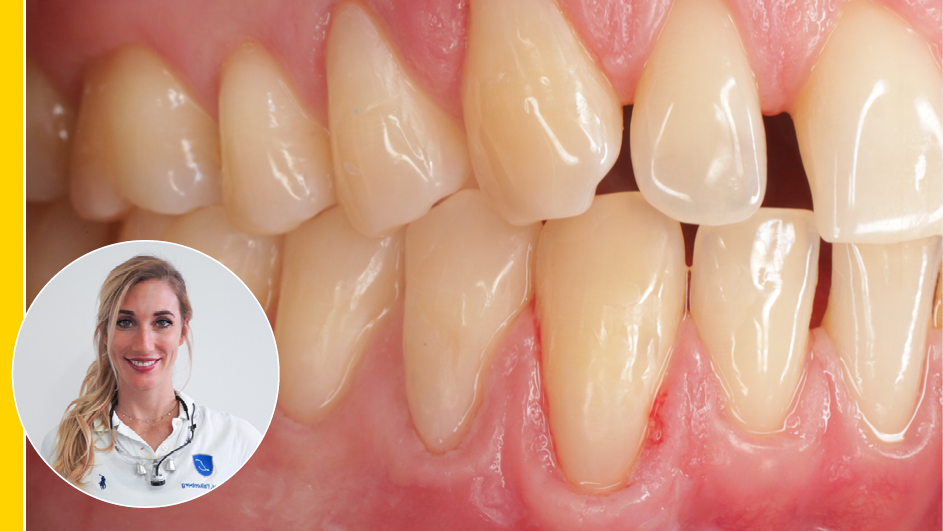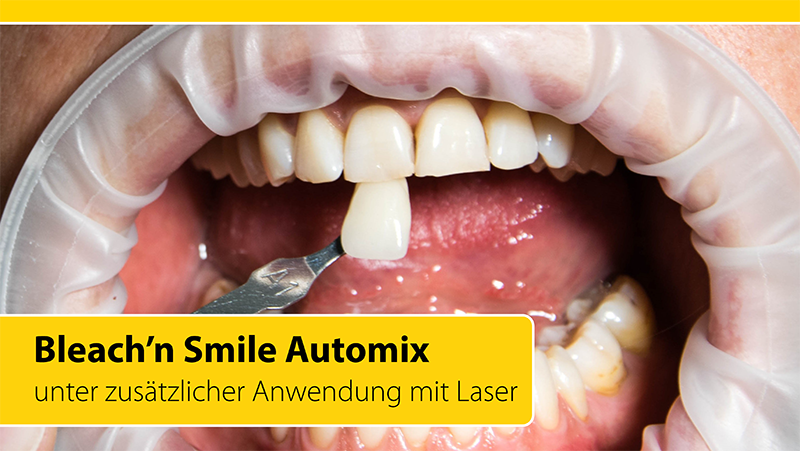Aesthetic cavity fillings - with Capo Bulk Fill Plus and PrimeBond7
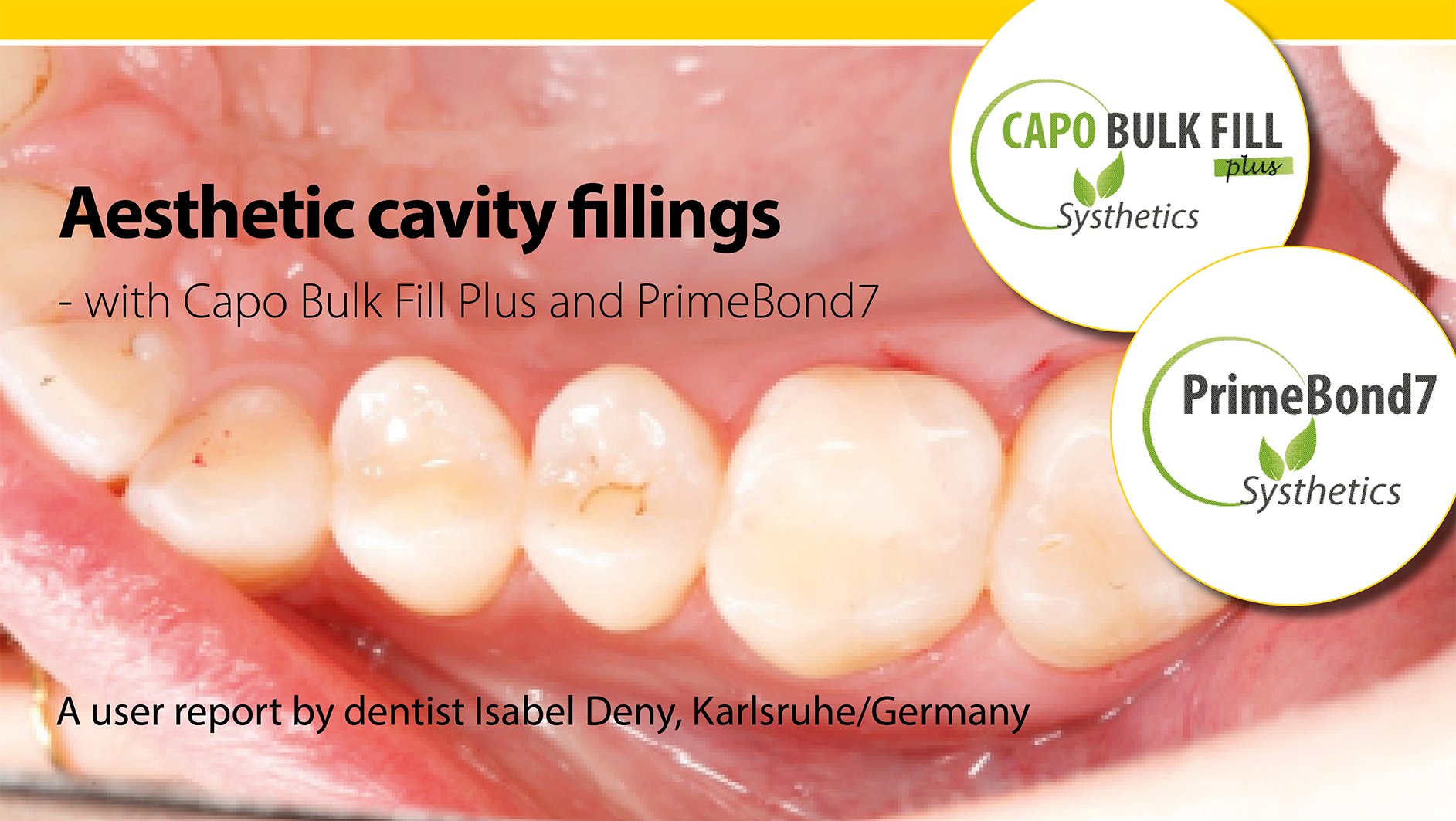
Aesthetic cavity fillings
- with Capo Bulk Fill Plus and PrimeBond7
A user report by dentist Isabel Deny, Karlsruhe/Germany
Initial Situation
During a routine examination of the patient, several carious fissures were discovered in the molar region (Fig. 1). To prevent further loss of hard tooth structure and progression of the caries, fillings with Capo Bulk Fill Plus (Schütz Dental) were suggested to the patient.
Products used
For the treatment, we chose the light curing lateral tooth composite Capo Bulk Fill Plus and the 7th generation bonding agent PrimeBond7 (Fig. 2). Both products were from Schütz Dental’s new Systhetics product line.
Removal of the caries and preparation of the tooth for the filling
The affected fissures initially underwent minimally invasive opening that targeted the defects and the caries was removed (Fig. 3). The usual preparation principles should be adhered to so as not to endanger the pulp. Rubber dam was used for absolute desiccation of the tooth (Fig. 4). The tooth was properly cleaned and dried.
Etching the hard tooth substance
In this case, I decided to use the selective etch method, although PrimeBond7 can also be used in the self etch technique. Enamel etching with an established acid etching technique conditions the enamel for the filling and thus appropriately prepares it (Fig. 5). Application of the etching gel (37% phosphoric acid gel) takes 30 seconds. This is followed by thorough rinsing with water and drying with air.
Use of PrimeBond7
After etching and drying of the tooth, PrimeBond7 is initially used. An adequate amount of the bonding agent must be applied to the entire tooth cavity. The reaction time is at least 20 seconds. After the reaction time, the excess material is blown off with compressed air until no more loose fluid film is visible. The curing time with a curing light is 10 seconds (Fig. 6).
Filling the tooth using Capo Bulk Fill Plus composite
The Capo Bulk Fill Plus material is a free-flowing light curing composite. The material is in a syringe and is simply introduced into the cavity via the application syringe. Slow and steady pressure should be applied during this process. It must be ensured that no air bubbles develop in the material (Fig. 7). The material is applied and cured in several layers. The curing time per layer, using a curing light, is 20 seconds. The optical fiber must be kept as close as possible to the filling surface. Polymerization can be done in increments up to a thickness of 4 mm. This serves to shorten the treatment time and increases the patient’s comfort.
Finishing the final fillings
The Capo Bulk Fill Plus material can be finished and polished immediately after polymerization. Finishing is done with finishing diamonds and SofLex discs. After occlusion has been checked with an articulation paper, the filling is ready (Fig 8). Once the anesthesia has worn off, the patient is able to start using the tooth with the filling immediately.
Conclusion
Capo Bulk Fill Plus and PrimeBond7 are very good for processing materials and easy to handle. Capo Bulk Fill Plus is visually attractive, especially its color. Because the material is one of the few on the market that is free of Bis‑GMA, it is for me the material of choice for restoring carious lesions in the lateral tooth region. Furthermore, I was also impressed by the stability in conjunction with the very good handling.
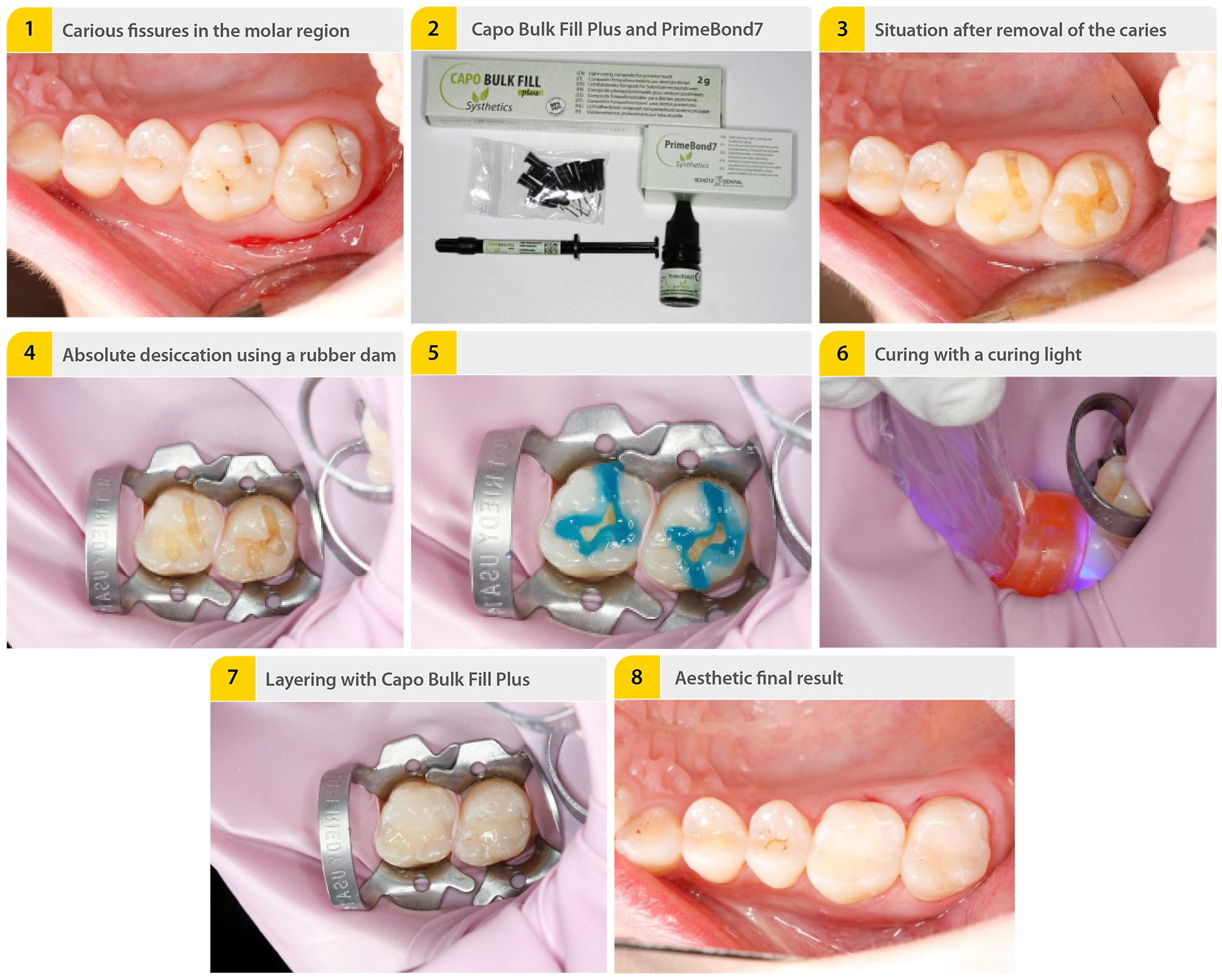
The Author
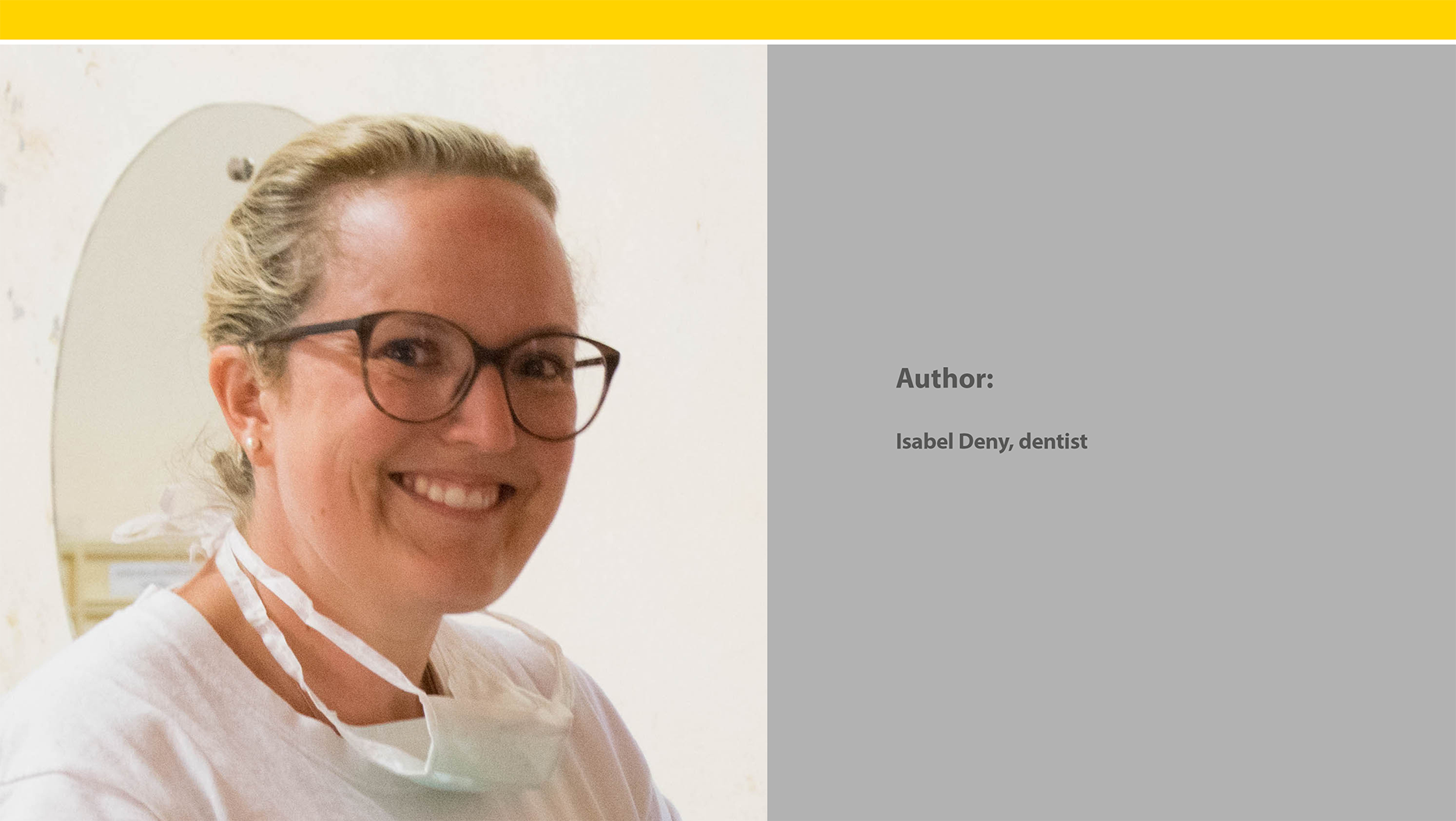
Download this case study as PDF file:
Read now!
Please note: This case study is not an instruction leaflet. Please adhere to the instructions provided with the material and/or equipment. The responsibility for the treatment remains with the attending dentist.


